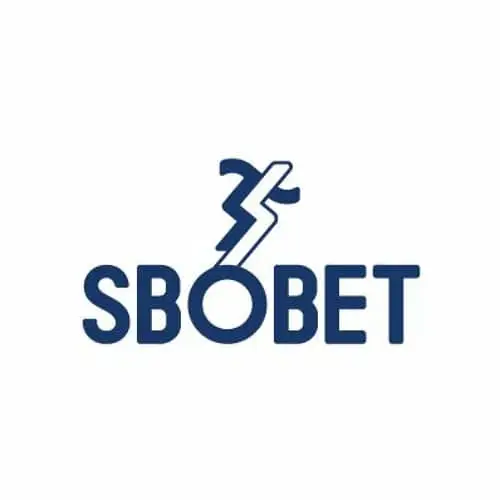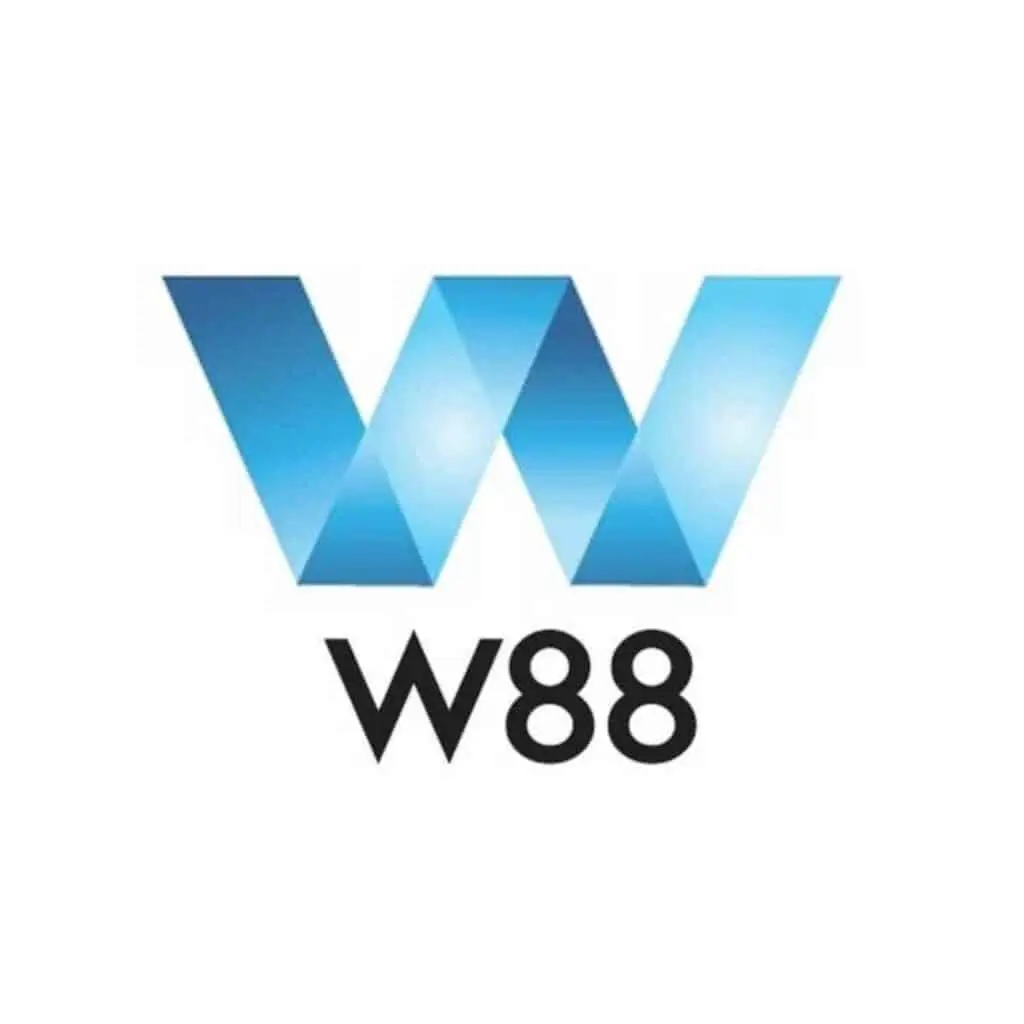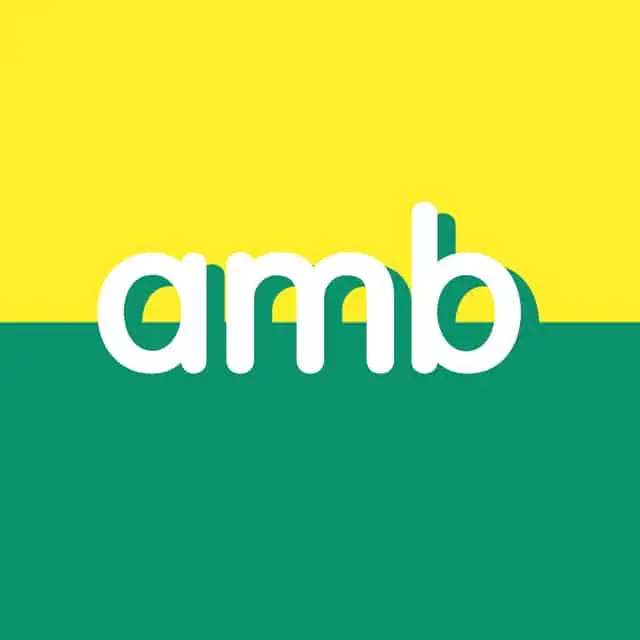

สล็อตเว็บตรง ไม่ผ่านเอเย่นต์ ไม่มีขั้นต่ำ เว็บสล็อต ค่ายใหญ่ อันดับ 1 PG SLOT แตกง่าย อัพเดทใหม่ล่าสุด ปี 2024
สล็อตเว็บตรง เชิญชวนคุณมาสัมผัสประสบการณ์เกม สล็อตเว็บตรง ไม่ผ่านเอเย่นต์ ที่เข้าเล่นง่าย ไม่มีขั้นต่ำ พร้อมระบบจากค่ายยักษ์ใหญ่ Pg slot ที่แจกโบนัสแบบจัดเต็ม ไม่ว่าคุณจะมีทุนมากหรือน้อย ก็มีโอกาสรับรางวัลใหญ่ได้ทุกการหมุน สล็อตเว็บตรง แตกง่าย เปิดให้บริการแล้ววันนี้ รองรับทั้งนักเล่นมือใหม่และมืออาชีพ ด้วยระบบที่ปลอดภัย ไม่ต้องกังวล การันตีความน่าเชื่อถือ อันดับ 1 ประจำปี 2024
เรามาพร้อมมาตรฐานระดับสากล สล็อตเว็บตรง ที่ได้รับความนิยมสูงสุดในปี 2024 รวมเกมจากทุกค่ายดังระดับโลก พร้อมอัตราการจ่ายเงินรางวัลสูงลิ่ว เว็บตรง ฝากถอนไม่มีขั้นต่ำ เริ่มต้นเพียง 1 บาท พร้อมแนะนำเกมใหม่ที่แตกง่าย สล็อตเว็บตรง แตกง่าย ให้คุณได้ลุ้นรับโชคก้อนใหญ่ สล็อตเว็บตรง อันดับ 1 สนุกได้ทุกการสปิน เริ่มต้นได้ทันทีไม่มีขั้นต่ำ
สล็อตเว็บตรง ไม่ผ่านเอเย่นต์ เว็บลิขสิทธิ์แท้ 100% ได้รับใบอนุญาตถูกกฎหมายรายเดียวในประเทศไทย มาพร้อมระบบ เว็บสล็อต แท้จากเซิร์ฟเวอร์หลัก รับประกันอัตราการจ่ายเงินสูงสุด ด้วยระบบออโต้ทันสมัยที่สุดในปี 2024 รองรับ สล็อตวอเลท truewallet ฝาก-ถอนไม่มีขั้นต่ำ เสร็จภายใน 30 วินาที ไม่ต้องผ่านแอดมิน สมัครวันนี้ รับสิทธิ์เล่น เกมส์สล็อต ใหม่ล่าสุดก่อนใคร พร้อมรวมทุกค่ายดังไว้ที่นี่ที่เดียว
สารบัญสล็อตเว็บตรง
สล็อตเว็บตรง คืออะไร ปั่นสล็อตกับ เว็บตรง 100% มั่นคง ปลอดภัยที่สุด
สล็อตเว็บตรง คือ เว็บให้บริการเกมสล็อตออนไลน์ที่ได้รับลิขสิทธิ์แท้จากต่างประเทศ เชื่อมต่อตรงกับเซิร์ฟเวอร์หลัก ไม่ผ่านเอเย่นต์ รับประกันระบบเล่นแท้ 100% ไม่มีการล็อคยูสเซอร์ พร้อมอัตราการจ่ายเงินสูง เรารวมค่ายดังระดับโลกไว้ในที่เดียว ทั้ง Pg Slot, Pragmatic Play, Joker Gaming, JILI และค่ายชั้นนำอื่นๆ อีกมากมาย ให้คุณเลือกเล่นได้มากกว่า 3,000 เกม พร้อมอัตราการชนะสูงถึง 98% นี่จึงเป็นเหตุผลว่าทำไมนักเดิมพันถึงเลือกเล่นกับ เว็บตรง 100% ที่มั่นคง ปลอดภัย และให้โอกาสทำกำไรสูงกว่า
สล็อตเว็บตรง API เว็บแท้ ส่งตรงจากต่างประเทศ ถอนได้ไม่จำกัด
สล็อตเว็บตรง API ของเรามาพร้อมระบบมาตรฐานระดับสากล มอบประสบการณ์เล่นเกมที่ปลอดภัยสูงสุดให้กับสมาชิกทุกท่าน สล็อตเว็บแท้ ที่ดูแลทุกขั้นตอนอย่างรัดกุม เพื่อให้คุณมั่นใจในการสร้างรายได้กับ เว็บสล็อตออนไลน์ ของเรา ด้วยระบบการเงินที่มั่นคง เว็บของเรารับประกันการถอนเงินรางวัลครบทุกยอด จ่ายเต็มทุกครั้งไม่มีหัก เว็บสล็อตเว็บตรง ค่ายใหญ่ ที่ไม่เคยมีประวัติการทำงานผิดพลาด พร้อมให้บริการคุณตลอด 24 ชั่วโมง
ทางเข้า สล็อตเว็บตรง แตกง่าย ไม่มีขั้นต่ำ ทุนน้อยก็เล่นได้ รับกำไรแบบจัดเต็ม
เปิดประตูสู่โลกเกม สล็อตเว็บตรง แตกง่าย ไม่มีขั้นต่ำ ที่แม้ทุนน้อยก็มีโอกาสทำกำไรได้แบบจัดเต็ม สล็อตเว็บตรง100% จ่ายครบทุกยอด ไม่มีหัก ไม่มีกั๊ก พร้อมระบบที่โปร่งใส สล็อต ปลอดภัย 100% ไร้ประวัติการโกง เว็บสล็อตแตกง่าย อันดับ 1 ที่มาพร้อมระบบถอนเงินรวดเร็วทันใจ เว็บสล็อตใหม่ล่าสุดเว็บตรงแตกง่าย เริ่มต้นเดิมพันไม่มีขั้นต่ำ เล่นได้ไม่จำกัดรอบ สล็อตเว็บตรง ขั้นต่ำ 1 บาท เลือกเกมได้ตามใจชอบ
สล็อตเว็บตรง ไม่ผ่านเอเย่นต์ มาพร้อมโบนัสแตกง่าย แตกบ่อย จ่ายหนัก รับเงินรัวๆ รวมเกมสล็อตมากที่สุด สล็อต เว็บตรง ฝาก-ถอน true wallet ไม่มี ขั้น ต่ํา พิสูจน์ด้วยตัวคุณเอง ว่าทำไมเราถึงเหนือกว่าเว็บทั่วไปและบ่อนคาสิโน ที่ตอบโจทย์ทุกความต้องการ จนได้รับการยกให้เป็น เว็บสล็อตอันดับ 1 แห่งปี ที่นักเดิมพันต้องเลือก
ข้อดีและจุดเด่นของ สล็อตเว็บตรง ไม่มีขั้นต่ำ เลือกเดิมพันกับเว็บของเรา รับรองไม่ผิดหวัง
ก่อนตัดสินใจเลือกเล่น สล็อตเว็บตรง มาทำความรู้จักจุดเด่นที่ทำให้เราเป็นเว็บอันดับต้นๆ ที่นักเดิมพันเลือก สล็อตไม่มีขั้นต่ำ ด้วยระบบที่เหนือชั้น พร้อมมอบประสบการณ์เล่นที่เหนือกว่า สำหรับนักเดิมพันที่สนใจเล่น สล็อตเว็บตรง เรามีบริการที่โดดเด่นและตอบโจทย์การทำเงินของคุณ นำเสนอระบบที่เข้าใจง่าย พร้อมโอกาสทำกำไรสูง เรามาทำความรู้จักกับบริการหลักของเราที่ทำให้ slot แตกง่าย แตกต่างจากเว็บอื่น เพื่อให้มือใหม่เข้าใจก่อนสมัครสมาชิก
- ระบบฝาก-ถอนอัจฉริยะ
- ทำรายการเสร็จภายใน 30 วินาที
- รองรับทั้งบัญชีธนาคารและวอลเลท
- ระบบออโต้ทำงานตลอด 24 ชั่วโมง
- การเข้าถึงระบบที่สะดวกและปลอดภัย
- เข้าเล่นง่ายผ่านทุกอุปกรณ์
- ระบบความปลอดภัยระดับสูง
- เสถียรภาพเครือข่ายเหนือชั้น
- อินเตอร์เฟซที่ใช้งานง่าย
- เมนูเรียบง่าย เข้าใจได้ทันที
- ฟังก์ชั่นทันสมัยตอบโจทย์ผู้เล่น
- ระบบสปินที่ลื่นไหล ไม่สะดุด
- ประสบการณ์เล่นระดับพรีเมียม
- การแสดงผลคมชัด ไม่มีดีเลย์
- โฟกัสกับเกมได้เต็มที่
- เล่นได้อย่างต่อเนื่องไม่มีสะดุด
สล็อตเว็บตรง ของเรามุ่งมั่นพัฒนาเพื่อมอบประสบการณ์เล่นที่ดีที่สุด เว็บสล็อตไม่ผ่านเอเย่นต์ ที่พร้อมให้คุณสนุกกับการเดิมพันได้อย่างเต็มที่ทุกรูปแบบ ด้วยระบบที่ทันสมัยและปลอดภัยที่สุด
เว็บสล็อตเว็บตรง แตกง่าย แตกหนัก มีเทคนิคการเล่นมากมาย รองรับผู้เล่นทุกคน
สล็อตเว็บตรง ศูนย์รวมเกมสล็อตแท้ 100% รับประกันการทำเงินจริง พร้อมระบบ สล็อตแตกหนัก วันนี้ ที่รวมทุกเกมคุณภาพไว้ในที่เดียว สล็อต เว็บตรงไม่ผ่านเอเย่นต์ไม่มีขั้นต่ำ ไม่ต้องเสียเวลาค้นหาที่อื่น เรานำเสนอ slot pg เว็บตรง แตกหนัก ที่การันตีกำไร ยิ่งเล่นยิ่งคุ้ม สล็อตเว็บตรง เว็บเดียวจบ ครบทุกค่ายดัง โบนัสแตกง่าย จ่ายหนัก สล็อตแตกง่าย พร้อมรางวัลพิเศษตลอดทั้งเกม
สิทธิพิเศษที่คุณจะได้รับ
- สล็อตแตกง่าย เว็บตรง 100% แจกเครดิตฟรี
- สล็อตเว็บตรง ไม่ผ่านเอเย่นต์ ไม่มีขั้นต่ำ มีเซอร์ไพรส์ตลอด
- กิจกรรมและโปรโมชั่นเสริมทุนมากมาย
- สล็อตแตกง่าย แตกบ่อย เล่นได้ไม่สะดุด
พร้อมแนะนำเทคนิคเด็ดๆ ให้คุณทำกำไรได้อย่างต่อเนื่อง รับประกันความคุ้มค่าทุกการเดิมพัน มาพร้อมระบบที่ทันสมัยและปลอดภัยที่สุด
เลือกเกมส์ สล็อตเว็บตรง ที่มีรางวัลใหญ่และอัตราการจ่ายที่สมดุล
เคล็ดลับสำคัญสำหรับมือใหม่ที่เริ่มเล่น สล็อตเว็บตรง คือการเลือกเกมที่มีสัดส่วนการจ่ายเงินและโบนัสที่เหมาะสม โดยควรมองหาเกมที่มีอัตราโบนัสและฟรีสปินสูง เพราะจะเพิ่มโอกาสในการทำกำไรได้มากกว่า นอกจากนี้ การบริหารจัดการเงินทุนก็เป็นสิ่งสำคัญ เนื่องจากผู้เล่นแต่ละคนมีเงินทุนไม่เท่ากัน จึงควรวางแผนการลงทุนและบริหารความเสี่ยงให้เหมาะสมกับเงินทุนของตัวเอง เพื่อให้สามารถเล่นได้อย่างยั่งยืนในระยะยาว ถือเป็นพื้นฐานสำคัญที่นักลงทุนมือใหม่ไม่ควรมองข้าม
ทำความเข้าใจกฏกติกา เกมสล็อต ต่างๆเพื่อความมั่นใจในการเล่น
สำหรับผู้ที่จะเริ่มเล่น สล็อตเว็บตรง ไม่ผ่านเอเย่นต์ ความเข้าใจในหลักการพื้นฐานคือกุญแจสำคัญสู่ความสำเร็จ ไม่ว่าจะเป็นกติกา รูปแบบการเล่น หรือเทคนิคต่างๆ ของ เกมสล็อต แต่ละประเภท ทุกท่านควรศึกษาทุกรายละเอียดให้ถี่ถ้วนก่อนเริ่มเดิมพันจริง เพราะเทคนิคและความเข้าใจที่ดีจะเป็นเครื่องมือสำคัญในการเพิ่มโอกาสทำกำไร และช่วยให้การลงทุนของท่านประสบความสำเร็จได้ดียิ่งขึ้น นี่คือพื้นฐานสำคัญที่จะช่วยให้ท่านได้เปรียบในการเล่น
ทดลองเล่นเกมสล็อตต่างๆ ก่อนเดิมพันจริง
สล็อตเว็บตรง เปิดโอกาสให้มือใหม่ได้สัมผัสประสบการณ์การเล่นฟรี ก่อนเริ่มเดิมพันด้วยเงินจริง พร้อมเรียนรู้เทคนิคการเอาชนะโดยไม่ต้องกังวลเรื่องความเสี่ยง ระบบทดลองเล่นของเราจำลองบรรยากาศเหมือนการเล่นจริงทุกขั้นตอน ช่วยให้ผู้เล่นใหม่เข้าใจกลไกเกม เพิ่มความมั่นใจ และพร้อมสำหรับการเดิมพันจริงในอนาคต เพื่อโอกาสในการทำกำไรที่มากขึ้น ทดลองเล่นได้ฟรีที่นี่ตลอด 24 ชั่วโมง
ปรับเบทขึ้น-ลง ตามอัตราการจ่ายเงินรางวัล
เทคนิคการปรับเบทใน สล็อต คือหนึ่งในกลยุทธ์ที่ได้รับความนิยมสูง เพราะช่วยเพิ่มโอกาสในการรับโบนัสและรางวัลใหญ่ แม้คุณจะมีทุนจำกัด ก็สามารถทำกำไรก้อนโตได้ในเวลาอันรวดเร็ว หลักการคือการปรับเบทใน เกมส์สล็อต ตามสถานการณ์ที่เกิดขึ้น โดยเฉพาะเมื่อสังเกตว่าอัตราการแตกรางวัลเพิ่มสูงขึ้น ควรเพิ่มเงินเดิมพันเป็นสองเท่า เพื่อรับผลตอบแทนที่สูงขึ้นตามสัดส่วนการลงทุนในแต่ละรอบ
เลือกเกมสล็อตที่ซื้อฟรีสปินได้
สล็อตเว็บตรง แตกหนัก บางเกมมีระบบซื้อฟรีสปินที่จะช่วยเพิ่มโอกาสในการรับรางวัลใหญ่ได้มากขึ้น ฟีเจอร์พิเศษนี้จะช่วยเพิ่มรอบโบนัสฟรี ทำให้ผู้เล่นมีโอกาสทำกำไรได้สูงกว่าการเล่นปกติหลายเท่า เมื่อเข้าสู่รอบฟรีสปิน รางวัลจะถูกทวีคูณตามจำนวนสัญลักษณ์พิเศษที่ปรากฏ ยิ่งได้สัญลักษณ์มาก โอกาสรับรางวัลใหญ่ก็ยิ่งสูงขึ้นตามลำดับ นี่จึงเป็นตัวเลือกที่น่าสนใจสำหรับผู้ที่ต้องการเพิ่มโอกาสทำกำไร
สล็อตเว็บตรง ไม่ผ่านเอเย่นต์ รองรับการฝากถอนผ่าน ทรูวอเลท ไม่มีขั้นต่ำ เว็บสล็อต ที่ดีที่สุดในตอนนี้
ก้าวสู่มิติใหม่ของเกมสล็อตออนไลน์กับ สล็อตเว็บตรง ไม่ผ่านเอเย่นต์ ที่ตอบโจทย์ทุกความต้องการของผู้เล่น ด้วยระบบฝาก-ถอนผ่าน ทรูวอเลท (true wallet) ไม่มีขั้นต่ำ เล่นได้แม้ไม่มีบัญชีธนาคาร เว็บสล็อต ของเราพร้อมมอบประสบการณ์เล่นระดับพรีเมียมในปี 2024
ด้วยระบบ slot wallet ที่ล้ำสมัย เราได้ยกระดับการให้บริการด้วย เว็บสล็อตใหม่ล่าสุด ที่รวบรวมเกมจากทุกค่ายดังระดับโลก พร้อมระบบฝากถอนอัตโนมัติที่รวดเร็วภายใน 30 วินาที รองรับการเล่นผ่านทุกอุปกรณ์ ให้คุณสนุกได้ทุกที่ ทุกเวลา
สล็อตวอเลท ของเราได้รับการพัฒนาด้วยระบบความปลอดภัยระดับสูง การันตีความมั่นคง 100% จึงทำให้เราเป็น เว็บสล็อต ที่ดีที่สุด บนระบบ สล็อตเว็บตรง ไม่ผ่านเอเย่นต์ พร้อมให้บริการคุณตลอด 24 ชั่วโมง เพื่อประสบการณ์เล่นเกมที่เหนือระดับ
เว็บสล็อตใหม่ล่าสุด ระบบออโต้ Slot Auto ทันสมัยที่สุดในปี 2024
ก้าวสู่โลกแห่งความทันสมัยกับ สล็อตเว็บตรง 100% ที่พัฒนาเป็น เว็บสล็อตใหม่ล่าสุด พร้อมระบบ Slot Auto ที่ล้ำสมัยที่สุดแห่งปี 2024 เพื่อมอบประสบการณ์การเล่นที่เหนือระดับให้กับผู้เล่นทุกท่าน ด้วยระบบ สล็อตออโต้ ที่ครบวงจร ทั้งการสมัครสมาชิกที่เสร็จในพริบตา ระบบฝาก-ถอนอัตโนมัติที่รวดเร็วภายใน 30 วินาที โดยไม่ต้องรอการอนุมัติจากแอดมิน พร้อมอัพเดทเกมใหม่ล่าสุดให้คุณได้สัมผัสก่อนใคร
ระบบของเรารองรับการเล่นที่ลื่นไหล ไร้การสะดุดหรือหลุด ให้คุณสนุกได้อย่างต่อเนื่อง นับเป็นการยกระดับมาตรฐานการให้บริการเกมสล็อตออนไลน์สู่ความทันสมัยที่สุดในปัจจุบัน พร้อมให้คุณสัมผัสประสบการณ์ใหม่ที่เหนือกว่า
4 อันดับ เว็บพนันออนไลน์ ค่ายใหญ่ ยอดนิยมในปี 2024
เว็บพนันออนไลน์ เว็บใหญ่ กำลังมาแรงที่สุดในไทยปี 2024 ด้วยบริการ สล็อตเว็บตรง และคาสิโนออนไลน์ระดับโลก ที่ได้รับการยอมรับจากผู้เล่นชาวไทยมากที่สุด มาดูกัน 4 อันดับแบรนด์ดังที่ตอบโจทย์ความต้องการของคนไทย
แต่ละเว็บมาพร้อมจุดเด่นที่แตกต่างกัน ทั้งด้านเกม โปรโมชั่น และการบริการ ให้คุณได้เลือกตามสไตล์การเล่นที่ชื่นชอบ พร้อมระบบความปลอดภัยมาตรฐานสากล และการบริการระดับพรีเมียมตลอด 24 ชั่วโมง เพื่อประสบการณ์เล่นที่เหนือระดับ

UFABET
UFABET เว็บพนันออนไลน์อันดับ 1 ที่ครองใจผู้เล่นชาวไทยมาอย่างยาวนาน ด้วยบริการ สล็อตเว็บตรง ที่ครบครันและมาตรฐานระดับสากล โดดเด่นด้วยความหลากหลายของเกมพนันคุณภาพที่รวบรวมไว้ในที่เดียว
ไม่ว่าจะเป็นการเดิมพันกีฬาจากลีกดังทั่วโลก คาสิโนสดที่ถ่ายทอดตลอด 24 ชั่วโมง สล็อตออนไลน์ จากค่ายผู้ผลิตชั้นนำระดับโลก หรือเกมพิเศษอื่นๆ อีกมากมาย UFABET มีให้คุณเลือกเล่นอย่างจุใจ ด้วยระบบที่เสถียร ปลอดภัย และการบริการระดับพรีเมียม ทำให้ ยูฟ่าเบท เป็นจุดหมายปลายทางของเหล่านักเดิมพันที่ต้องการประสบการณ์เล่นเกมคุณภาพ พร้อมมอบความสนุกไร้ขีดจำกัดตลอด 24 ชั่วโมง

SBOBET
SBOBET เว็บพนันกีฬาและ สล็อตออนไลน์ ระดับโลก ที่ได้รับความนิยมสูงสุดจากผู้เล่นทั่วโลกรวมถึงชาวไทย ด้วยประสบการณ์การให้บริการอันยาวนานและความน่าเชื่อถือที่ได้รับการยอมรับในระดับสากล
ในฐานะผู้ให้บริการ สล็อตเว็บตรง SBOBET ได้สร้างมาตรฐานใหม่ให้วงการพนันออนไลน์ ด้วยระบบความปลอดภัยระดับสากล การบริการแบบมืออาชีพ และระบบการเงินที่มั่นคง ทำให้ผู้เล่นมั่นใจได้ในทุกการเดิมพัน
ด้วยความเป็นผู้นำในวงการพนันออนไลน์ SBOBET จึงเป็นตัวเลือกอันดับต้นๆ สำหรับผู้ที่ต้องการประสบการณ์การเล่นที่ดีที่สุด บนแพลตฟอร์มที่ได้รับการยอมรับระดับโลก พร้อมให้บริการคุณตลอด 24 ชั่วโมง

W88
W88 อีกหนึ่งผู้นำด้านเว็บพนันออนไลน์ระดับโลกที่ได้รับความไว้วางใจจากผู้เล่นทั้งในไทยและต่างประเทศ โดดเด่นด้วยบริการ สล็อตเว็บตรง ที่ครบครัน พร้อมคลังเกมคุณภาพที่คัดสรรมาให้เลือกเล่นอย่างจุใจ
W88 มุ่งมั่นพัฒนาระบบการให้บริการอย่างต่อเนื่อง ทั้งระบบฝาก-ถอนที่รองรับหลากหลายช่องทาง การทำธุรกรรมที่รวดเร็วและปลอดภัย พร้อมโปรโมชั่นและโบนัสสุดพิเศษที่มอบให้ทั้งสมาชิกใหม่และสมาชิกปัจจุบัน ด้วยมาตรฐานระดับสากล ระบบที่ทันสมัย และทีมงานมืออาชีพที่พร้อมให้บริการตลอด 24 ชั่วโมง ทำให้ W88 เป็นตัวเลือกชั้นเยี่ยมสำหรับผู้ที่มองหาประสบการณ์การเดิมพันที่เหนือระดับ

ASKMEBET
ASKMEBET ถือเป็นเว็บไซต์พนันออนไลน์ชั้นนำของประเทศไทย ที่ได้รับความไว้วางใจจากนักเดิมพันมาอย่างยาวนาน โดดเด่นด้วยคลังเกมสล็อตออนไลน์ที่ครบครัน คัดสรรมาจากค่ายดังระดับโลก พร้อมนำเสนอโปรโมชั่นสุดพิเศษอัปเดตใหม่ทุกเดือน ด้วยการเป็น สล็อตเว็บตรง ที่ไม่ผ่านเอเย่นต์ จึงการันตีความปลอดภัยและความน่าเชื่อถือให้กับสมาชิกทุกท่าน
สล็อตแตกง่าย เว็บตรง ลิขสิทธิ์แท้ ถูกกฏหมาย แจกโบนัสไม่อั้นทุกเกม
เชิญสัมผัสประสบการณ์เล่น สล็อตแตกง่าย ที่มอบความคุ้มค่าด้วยเงินลงทุนที่เหมาะสม พร้อมโปรโมชั่นเครดิตฟรีสำหรับสมาชิกทุกท่าน โดดเด่นด้วยระบบ สล็อตเว็บตรง แตกง่าย ที่มอบรางวัลใหญ่อย่างสม่ำเสมอ ภายใต้การดูแลของ การพนันออนไลน์ ที่การันตีความสนุกด้วย เกมสล็อตแตกบ่อย ครบครัน พร้อมระบบคืนยอดเสียที่ช่วยเพิ่มโอกาสทำกำไรและต่อยอดเงินรางวัลได้มากยิ่งขึ้น สมัครวันนี้รับโบนัสต้อนรับสมาชิกใหม่ทันที
สล็อต PG เว็บตรง แตกหนัก รวมเกมสล็อตจาก PG SLOT ทำเงินได้จริงทุกเกม
PG SLOT ครองใจนักเดิมพันด้วยการเป็นค่ายเกมระดับพรีเมียมที่ได้รับความนิยมสูงสุดบน สล็อตเว็บตรง ของเรา ด้วยระบบ สล็อตpg ที่การันตีการแตกรางวัลทุกเกม พร้อมอัตราการจ่ายเงินรางวัล (RTP) สูงถึง 98% โดดเด่นด้วยการออกแบบที่ทันสมัย ทั้งภาพและเสียงสมจริง เอฟเฟคตระการตา และฟีเจอร์ฟรีสปินที่แจกรางวัลแบบจัดเต็ม
สำหรับผู้ที่กำลังมองหา เกมส์สล็อต แตกง่าย เราขอการันตีความคุ้มค่าจาก สล็อต PG เว็บตรง แตกหนัก ด้วยระบบเดิมพันเริ่มต้นเพียง 1 บาท พร้อมโอกาสทำกำไรหลักแสนแบบง่ายๆ รองรับการทำธุรกรรมผ่าน Truewallet ฝาก-ถอนไม่มีขั้นต่ำ เล่นได้ไม่จำกัดแม้มีทุนน้อย


แนะนำ 5 เกมส์ สล็อตยอดนิยม ที่ เว็บตรงสล็อต เริ่มต้น 1 บาท ปั่นสล็อต ฟรีสปิน ไม่อั้น
วันนี้เราได้คัดสรร 5 เกมส์สล็อต สุดฮิตจาก สล็อตเว็บตรง ที่ได้รับความนิยมสูงสุด โดดเด่นด้วยอัตราการจ่ายเงินรางวัล (RTP) ที่สูงลิ่ว รับประกันความเป็น สล็อตแตกง่าย พร้อมโบนัสและฟรีสปินแบบจัดเต็ม อย่างไรก็ตาม ขอแนะนำให้พิจารณาความผันผวนที่แตกต่างกันของแต่ละเกมประกอบการตัดสินใจ
สัมผัสประสบการณ์ความสนุกกับ 5 เกมเด็ดจาก สล็อตเว็บตรง ที่เปิดโอกาสให้คุณทำกำไรได้จริงด้วยเงินเดิมพันเริ่มต้นเพียง 1 บาท พร้อมระบบ สล็อตแตกง่าย ที่มอบผลตอบแทนก้อนโตแบบไม่ต้องรอนาน เรารวบรวม เว็บสล็อต ชั้นนำที่คัดสรรมาเพื่อคุณโดยเฉพาะ หากกำลังมองหาเกมทำเงินที่เหมาะกับสไตล์การเล่นของคุณ เรามีเกมให้เลือกครบครัน พร้อมแนะนำตัวเลือกที่น่าสนใจที่สุดในปัจจุบัน

Fortune Dragon
สัมผัสความมหัศจรรย์แห่งโชคลาภกับสล็อตมังกรทองคำที่จะพาคุณพบกับความร่ำรวย โดดเด่นด้วยฟีเจอร์พิเศษที่มอบรางวัลแบบทวีคูณ ให้คุณ ปั่นสล็อต ได้อย่างมั่นใจด้วยระบบเกมที่ออกแบบมาเพื่อลดความเสี่ยง ภายในเกมนำเสนอในรูปแบบวิดีโอสล็อต 3 รีล 3 แถว พร้อมระบบตัวคูณสูงสุดถึง x10 เพิ่มโอกาสคว้ารางวัลใหญ่สูงสุด 2,500 เท่าของเงินเดิมพัน ด้วยอัตราการจ่ายเงินรางวัล (RTP) สูงถึง 96.74% การันตีโอกาสชนะรางวัลแบบรวดเร็วด้วยเงินลงทุนที่เหมาะสม

Mermaid
สล็อต Mermaid หรือ สล็อตนางเงือก เป็นผลงานชิ้นเอกที่สร้างความประทับใจให้นักเดิมพันทั่วโลก ด้วยการนำเสนอเรื่องราวแห่งความมหัศจรรย์ใต้ท้องทะเล ผ่านตัวละครนางเงือกผู้งดงาม หลอมรวมเข้ากับงานออกแบบกราฟิกระดับพรีเมียมที่เปี่ยมด้วยสีสันสดใส ยกระดับประสบการณ์การเล่นด้วยเอฟเฟกต์เสียงที่ถ่ายทอดบรรยากาศใต้ท้องทะเลได้อย่างสมจริง ชวนให้ผู้เล่นดำดิ่งสู่โลกแห่งจินตนาการที่เต็มไปด้วยขุมทรัพย์และความมหัศจรรย์ในทุกการหมุน

Gemstones Gold
สัมผัสความอลังการของ สล็อตทองอัญมณี เกมคุณภาพลิขสิทธิ์แท้จากค่ายชั้นนำระดับโลก ที่การันตีความยุติธรรมด้วยระบบการเล่นมาตรฐานสากล พร้อมระบบ เกมสล็อตแตกบ่อย ที่เปิดโอกาสให้ทุกคนเข้าถึงความสนุกด้วยเงินเดิมพันเริ่มต้นเพียง 1 บาท โดดเด่นด้วยอัตราการจ่ายเงินรางวัล (RTP) สูงถึง 96.71% พร้อมโอกาสคว้ารางวัลใหญ่สูงสุด 7,500 เท่าของเงินเดิมพัน พิเศษสุดกับฟีเจอร์ฟรีสปิน 10 รอบเมื่อได้รับสัญลักษณ์พิเศษ เพิ่มโอกาสทำกำไรแบบไม่มีขีดจำกัด

Fortune Tiger
Fortune Tiger หนึ่งในผลงานเอกจาก สล็อตpg ที่นำเสนอเรื่องราวผ่านสัญลักษณ์เสือมงคล ตัวแทนแห่งความเกรียงไกรและความมั่งคั่ง สร้างแรงบันดาลใจให้ผู้เล่นด้วยพลังแห่งความสำเร็จในทุกการหมุน ภายในเกมอัดแน่นด้วยฟีเจอร์พิเศษที่พร้อมมอบโชคลาภ ทั้งระบบฟรีสปิน สัญลักษณ์ไวด์ สแคทเตอร์ และโบนัสเกมสุดพิเศษ เพิ่มโอกาสคว้ารางวัลใหญ่แบบไม่มีขีดจำกัด ด้วยอัตราการจ่ายรางวัลที่สูงลิ่ว พร้อมระบบแจ็คพอตที่แตกง่ายกว่าที่เคย

Werewolf's Hunt
สัมผัสความระทึกใจไปกับ สล็อตหมาป่า ที่จะพาคุณดื่มด่ำกับบรรยากาศการเดิมพันสุดเร้าใจ เปิดโอกาสทำกำไรมหาศาลด้วยอัตราการจ่ายเงินรางวัล (RTP) สูงถึง 96.75% ผ่านระบบวิดีโอสล็อตแบบ 6 รีล 4 แถว ที่มาพร้อมฟีเจอร์พิเศษ โดดเด่นด้วยระบบฟรีสปินที่เพิ่มโอกาสคว้ารางวัลใหญ่สูงสุดถึง 10,000 เท่าของเงินเดิมพัน การันตีความคุ้มค่าในทุกการหมุน ด้วยระบบการเล่นที่ออกแบบมาเพื่อลดความเสี่ยงและเพิ่มโอกาสทำกำไรอย่างต่อเนื่อง
สมัคร สล็อตเว็บตรง ใหม่ล่าสุด อันดับ 1 ชนะง่าย ได้กำไรแบบจัดเต็ม
อย่าพลาดโอกาสทองกับ สมัคร สล็อตเว็บตรง ที่พร้อมมอบประสบการณ์การเดิมพันระดับพรีเมียมผ่าน เว็บสล็อตใหม่ล่าสุดเว็บตรง รีบคว้าโอกาสทำกำไรก้อนโตจากเกมสล็อตออนไลน์ที่ สล็อตเว็บตรง ล่าสุด ช่องทางทำเงินอันดับหนึ่งที่เหล่าเซียนสล็อตต่างการันตี
เปิดประตูสู่โลกแห่งความสนุกกับ สมัคร pg slot เว็บตรง ที่รวบรวมเกมดังระดับตำนานและเกมใหม่ล่าสุดให้คุณได้สัมผัสก่อนใคร พร้อมระบบที่รองรับการทำธุรกรรมแบบครบวงจร มาพร้อมคลังเกมที่ใหญ่ที่สุด การันตีการจ่ายรางวัลเต็มจำนวน พิเศษสุดสำหรับสมาชิกใหม่กับ pg slot สมัครฟรี พร้อมรับโปรโมชั่นสุดคุ้มที่นี่วันนี้ เพียงเข้าร่วมเป็นส่วนหนึ่งกับ สล็อตเว็บตรง ค่ายใหญ่ ของเรา รับประกันความคุ้มค่าในทุกการเดิมพัน
สล็อตเว็บตรง ฝากถอน True wallet ไม่มีขั้นต่ำ ทำธุรกรรมง่ายๆ ใช้เวลาไม่นาน
สล็อตเว็บตรง ไม่ผ่านเอเย่นต์ เปิดประสบการณ์ใหม่กับระบบ ฝาก-ถอน ทรูวอเลท แบบไม่มีขั้นต่ำ ตอบโจทย์ผู้เล่นที่ไม่สะดวกใช้บัญชีธนาคาร สล็อตวอเลท ของเราพร้อมมอบประสบการณ์เหนือระดับที่ครองใจนักเดิมพันตลอดปี 2024
slot wallet โดดเด่นด้วยความทันสมัยของเว็บเรา ที่รวบรวมเกมสล็อตชั้นนำให้คุณได้เพลิดเพลินตลอดทั้งวัน รองรับทุกอุปกรณ์พร้อมระบบ สล็อตเว็บตรง ฝากถอน true wallet ไม่มีขั้นต่ำ ที่ทำรายการเสร็จใน 30 วินาที เล่นได้ทุกที่ทุกเวลา สำหรับผู้ที่มองหา สล็อตทรูวอเลท และ เว็บสล็อต ที่ดีที่สุด เรามั่นใจว่า สล็อตเว็บตรง ไม่ผ่านเอเย่นต์ ของเราคือคำตอบที่สมบูรณ์แบบที่สุดสำหรับคุณ
สล็อตเว็บตรง ฝากถอนออโต้ อัพเดทใหม่ล่าสุด ระบบ Slot Auto ทันสมัยที่สุดในปี 2024
สล็อตเว็บตรง 100% พร้อมยกระดับประสบการณ์การเล่นของคุณด้วย เว็บสล็อตใหม่ล่าสุด ที่อัพเกรดสู่ระบบ Slot Auto อย่างเต็มรูปแบบ มอบความสะดวกสบายในการใช้งานสูงสุด ลดระยะเวลารอคอยด้วยระบบ สล็อตออโต้ ที่ครอบคลุมทุกบริการ ตั้งแต่การสมัครสมาชิกจนถึงการทำธุรกรรมฝาก-ถอน เสร็จสิ้นภายใน 30 วินาทีโดยไม่ต้องผ่านแอดมิน พร้อมอัพเดทคลังเกมใหม่ล่าสุดให้คุณได้สัมผัสก่อนใคร การันตีประสบการณ์การเล่นที่ราบรื่น ไร้การสะดุดหรือหลุด นับเป็นระบบที่ล้ำสมัยที่สุดแห่งปี 2024
สรุป สล็อตเว็บตรง ไม่ผ่านเอเย่นต์ ไม่มีขั้นต่ำ อัพเดทใหม่ล่าสุด ปี 2024 สมัครเลย อย่ารอช้า
สล็อตเว็บตรง เปิดโอกาสให้ทุกคนเข้าถึงความสนุกกับ สล็อตออนไลน์ ด้วยเงินลงทุนที่คุณกำหนดได้เอง ระบบ สล็อตแตกง่าย ที่พร้อมมอบผลตอบแทนคุ้มค่าแม้ลงทุนน้อย เหมาะสำหรับทั้งมือใหม่และผู้เล่นทุกระดับ สล็อตเว็บตรง ไม่ผ่านเอเย่นต์ ไม่มีขั้นต่ำ วันนี้ สัมผัสความสนุกกับ เว็บสล็อตใหม่ล่าสุด บนเว็บสล็อตออนไลน์ที่ปลอดภัย พร้อมเครดิตฟรีและระบบเล่นไม่มีล็อคยูส เปิดให้บริการ 24 ชั่วโมง สร้างรายได้เสริมง่ายๆ ที่ใครก็เข้าถึงได้ พร้อมโปรโมชั่นสุดพิเศษที่รอคุณอยู่
FAQ คำถามที่พบบ่อย เกี่ยวกับ สล็อตเว็บตรง
เพื่อความสะดวกของสมาชิกทุกท่าน เราได้รวบรวมคำถามยอดฮิตที่ได้รับการสอบถามบ่อยที่สุดมาไว้ในที่เดียว พร้อมคำตอบที่ครบถ้วน ชัดเจน และเข้าใจง่าย หากมีข้อสงสัยเพิ่มเติมนอกเหนือจากที่ระบุไว้ ทีมงานมืออาชีพของเราพร้อมให้บริการผ่านช่องทาง LINE@ ตลอด 24 ชั่วโมง ไม่เว้นวันหยุด เพื่อให้คุณได้รับประสบการณ์การเล่นที่ราบรื่นและสนุกที่สุด เรายินดีตอบทุกคำถาม ให้คำแนะนำ และช่วยเหลือทุกปัญหาที่อาจเกิดขึ้น ด้วยความใส่ใจและเป็นมิตร เพราะความพึงพอใจของสมาชิกคือเป้าหมายสูงสุดของเรา
สล็อตเว็บตรง ไม่ผ่านเอเย่นต์ คืออะไร แตกต่างจากเว็บทั่วไปอย่างไร?
สล็อตเว็บตรงคือเว็บที่ได้รับลิขสิทธิ์โดยตรงจากผู้พัฒนาเกมสล็อต ไม่ผ่านตัวแทนหรือเอเย่นต์ จึงมีความน่าเชื่อถือสูง โดดเด่นด้วย
- ระบบการเงินที่มั่นคง ฝาก-ถอนรวดเร็ว
- อัตราการจ่ายเงินรางวัลที่สูงกว่า
- เกมสล็อตแท้จากค่ายดังระดับโลก
- มีใบรับรองการดำเนินธุรกิจถูกกฎหมาย
ระบบฝาก-ถอนไม่มีขั้นต่ำ ทำงานอย่างไร ปลอดภัยแค่ไหน?
ระบบทำธุรกรรมของเว็บตรงทำงานด้วยระบบอัตโนมัติ 100% โดย
- ฝาก-ถอนผ่านระบบออโต้ เสร็จภายใน 30 วินาที
- รองรับทั้งการโอนผ่านธนาคารและ E-Wallet
- ไม่จำกัดจำนวนครั้งในการทำรายการ
- มีระบบเข้ารหัสความปลอดภัยมาตรฐานสากล
- มีทีมซัพพอร์ตดูแล 24 ชั่วโมง
เริ่มต้นเล่นครั้งแรกต้องทำอย่างไร มีขั้นตอนอะไรบ้าง?
สามารถเริ่มเล่นได้ง่ายๆ ดังนี้
- สมัครสมาชิกผ่านหน้าเว็บ ใช้เวลาไม่เกิน 3 นาที
- เลือกช่องทางฝากเงินที่สะดวก เริ่มต้น 1 บาท
- รับโบนัสต้อนรับสมาชิกใหม่
- เลือกเกมที่ต้องการและเริ่มเล่นได้ทันที
- ศึกษากติกาและวิธีเล่นจากคู่มือออนไลน์
มีเกมสล็อตให้เลือกเล่นกี่เกม จากค่ายอะไรบ้าง?
เว็บตรงรวบรวมเกมคุณภาพจากค่ายชั้นนำทั่วโลก
- มีเกมให้เลือกมากกว่า 1,000 เกม
- ค่ายดังเช่น PG Slot, Joker Gaming, NetEnt
- อัพเดทเกมใหม่ทุกสัปดาห์
- มีทั้งสล็อตคลาสสิกและวิดีโอสล็อต
- รองรับการเล่นทั้งบนคอมและมือถือ
มีโปรโมชั่นและสิทธิพิเศษอะไรให้สมาชิกบ้าง?
เว็บตรงมอบสิทธิประโยชน์มากมาย
- โบนัสต้อนรับสมาชิกใหม่สูงถึง 100%
- คืนยอดเสียรายสัปดาห์
- แจกเครดิตฟรีในกิจกรรมพิเศษ
- สะสมแต้มแลกรางวัล
- โปรโมชั่นพิเศษในวันเกิดและเทศกาลต่างๆ


สล็อต เว็บตรง ยุโรป ระบบอัตโนมัติล้ำสมัย พร้อมเกม PG SLOT รุ่นล่าสุด


สล็อต 789 เว็บตรง True wallet ไม่มีขั้นต่ำ สล็อตเว็บตรง ครบทุกค่าย



YEEBET Gaming บริการคาสิโนออนไลน์ระดับพรีเมียม ครบวงจรตลอด 24 ชั่วโมง


